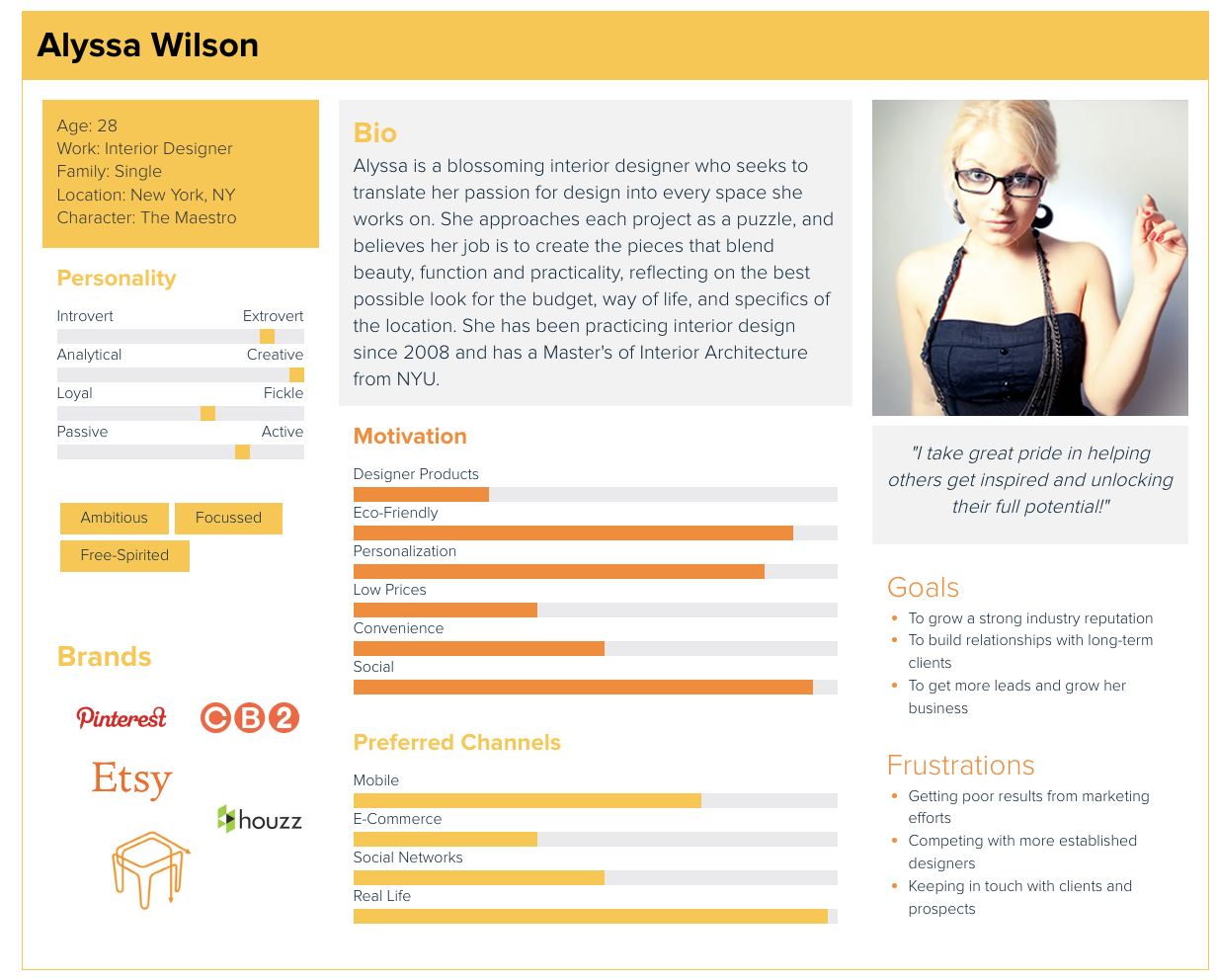User personas are one of the most functional UX methods for humanising and understanding target audiences. They provide UX practitioners with a reference focal point for decision-making throughout the design process, based on the requirements, pain points, and behaviours of their target users. They also help them to convey design decisions to stakeholders and developers. But how does one create user personas founded on actual data, not assumptions? How do UX practitioners exploit them to influence their decisions and validate their solutions throughout the design process?This article will provide answers to these concerns, explaining what user personas are, why they are vital, and how to construct them using various techniques and methods, and also discuss best practices and strategies for implementing user personas in UX initiatives.
What is a UX persona?
A UX persona is essentially a fictional representation of a user segment based on real user data and research. It goes beyond demographic information and captures the motivations, goals, behaviours, and pain points of the target audience. By creating UX personas, UX practitioners practically ‘step’ into the shoes of their users and make informed design decisions that cater to their specific needs and preferences. Fundamentally, user personas help inform product design, content creation, marketing strategies, and user experience (UX) decisions by enabling product teams to empathise with and design for their different target users.
UX persona examples
To better understand how UX personas work, let's take a look at a few examples:
- Sarah the Shopper: Sarah is a working professional in her late 20s who loves online shopping. She seeks convenience, personalised recommendations, and easy checkout processes.
- David the Dabbler: David is a retired individual in his 60s who enjoys exploring new technology. He values simplicity, intuitive interfaces, and accessibility features.
- Emily the Entrepreneur: Emily is a small business owner in her 30s who relies heavily on productivity tools. She prioritises efficiency, collaboration, and seamless integrations.
Role of UX personas in design and development
UX personas play a vital role in the design and development process. They help one to:
- Empathise with their users and see the problem from their perspective
- Define their user needs and requirements
- Focus primarily on the most important features and functionalities
- Communicate their design vision and rationale to stakeholders and developers
- Test and validate their solutions with real users
UX personas are not only useful for UX practitioners but also for other roles involved in the product development process, such as product managers, marketers, content writers, developers, etc. In practice, they help everyone align around the same user goals and expectations, and create a consistent user experience across different touchpoints.

Types of personas
For the most part, user personas are informed by research methods like market analysis, surveys, and interviews that gather insights about the target users. There are different types of personas that you can create depending on your project goals, scope, and resources. Here are some examples of the most common ones:
Proto personas
Proto personas are quick and easy personas that one can create at the early stages of the design process when they have limited, or no data available. They are based on assumptions and hypotheses that one makes about their users based on their domain knowledge, experience, or intuition. They help UX practitioners to start thinking about their users and generate ideas for further research.To create proto-personas, one can use a simple template that includes the following elements:
- Name and photo
- Demographic details
- Goals and needs
- Pain points and challenges
- Potential solutions
In practice, one can create proto-personas individually or collaboratively with their team or stakeholders using sticky notes or online tools. They can also validate them later with real data from user research.
Qualitative personas
Qualitative personas are more detailed and accurate personas that you can curate when you have more data available from user research. They are based on qualitative data collected from methods such as interviews, observations, focus groups, diary studies, etc. They help you dive deeper into your users' needs, motivations, frustrations, and preferences.To create qualitative personas, you can use a more comprehensive template that includes the following elements:
- Name and photo
- Demographic details
- Behavioural characteristics
- Scenarios and tasks
- Quotes or testimonials
You can create qualitative personas by analysing the data collected from user research using techniques such as affinity diagramming, persona mapping, or empathy mapping. You can also leverage online tools or software to create and share your personas.
Statistical or mixed method personas
Statistical or mixed method personas are the most complex and reliable personas that you can create when you have large amounts of data available from user research. They are based on both qualitative and quantitative data collected from methods such as surveys, analytics, A/B testing, etc. They help you create more realistic and nuanced personas that reflect the diversity of your user base.To create statistical or mixed method personas, you can use a sophisticated template that includes elements similar to qualitative personas but with some additional ones:
- Name and photo
- Demographic details
- Behavioural characteristics
- Scenarios and tasks
- Quotes or testimonials
- Data-driven insights (such as metrics, segments, clusters, etc.)
You can create statistical or mixed-method personas by using advanced techniques such as factor analysis, cluster analysis, or machine learning.
How to build a UX persona?
Building a UX persona is not a one-time activity but an iterative process that involves four main steps:
1. Conduct user research
Start by conducting user research to gather qualitative and quantitative data. User interviews, observations, surveys, and analytics are effective methods to understand user needs, behaviours, and preferences. This research phase is crucial for gathering insights that inform the persona creation process.
2. Data analysis
Analyse the data collected during user research to identify patterns, trends, and commonalities among your target audience. Iteratively look for recurring themes, pain points, and goals. Also, ensure to categorise and prioritise the information based on its relevance to your design objectives.
3. Persona creation
Start by giving each persona a name to personalise and humanise them. Then, create a detailed profile for each persona, including the following elements:
- Demographics: Capture relevant demographic information such as age, gender, location, and occupation.
- Goals and Motivations: Define the primary goals, motivations, and desired outcomes of each persona when interacting with your product or service.
- Needs and Pain Points: Identify the pain points, challenges, and needs that your personas have, and how your product or service could address them.
- Behaviours and Preferences: Document the typical behaviours, preferences, and interaction patterns of each persona. Consider their preferred devices, browsing habits, content formats, or any specific requirements.
- Persona Story: Create a narrative or backstory that provides context and describes a typical day in the life of each persona. This helps to make them more relatable and memorable.
4. Validation
Once you have created a persona, it's crucial to validate it. Share the persona with stakeholders, designers, and developers to gather feedback and ensure its accuracy. You can conduct additional user interviews or usability tests to validate whether the persona aligns with real user needs and behaviours.

Best practices and strategies for implementing UX Personas
To make the most of your UX personas, consider the following best practices and strategies:
- Involve stakeholders: Engage stakeholders, including researchers, designers, developers, and product managers, in the persona creation process. Their insights and perspectives will contribute to a more comprehensive understanding of the target audience.
- Keep personas updated: Regularly revisit and update your personas as user behaviours and preferences evolve. Set up mechanisms to collect ongoing user feedback and incorporate it into persona profiles.
- Use visuals: Visualise your personas using visual elements such as photographs, icons, or illustrations. This helps to make them more relatable and memorable for the entire team.
- Consider multiple personas: Depending on the sophistication of your product or service, you may be required to create multiple personas to represent different user segments. Ensure that each persona captures unique characteristics and needs.
- Empathy and user-centricity: Embrace empathy and a user-centric mindset throughout the design and development process. Continuously refer back to your personas to ensure that your decisions align with user needs and expectations.
Conclusion
Fundamental to user-centred design is the creation of effective UX personas. By understanding your audience's motivations, objectives, and pain points, you can create experiences that resonate with and engage users. Remember to conduct exhaustive user research, analyse the data, develop realistic personas, and validate them to ensure their efficacy. By adhering to the best practices and strategies indicated in this article, you should be able to create effective UX personas that result in successful design and development.Talk to our UX consultants at Netizen Experience to know more about user research and creating personas for your next project!





